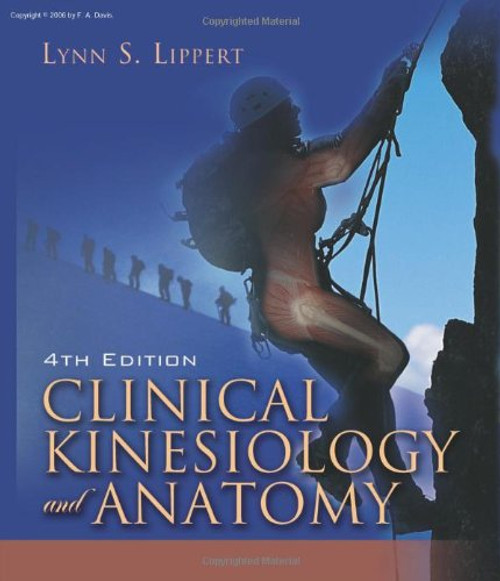Introduction to Kinesiology: Studying Physical Activity, Third Edition, explains the evolving discipline of kinesiology, demonstrating how its many subject areas integrate into a unified body of knowledge. This all-inclusive approach gives students a solid background in the field and prepares them for further study and course work. Engaging and jargon-free, this outstanding text also introduces students to the available job prospects and areas of study and professional practice in kinesiology.
Introduction to Kinesiology, Third Edition, orients and prepares students for in-depth studies in their areas of interest. The broad scope of this text acknowledges students' diverse interests and aspirations in teaching and coaching, professional, and scholarly career tracks. Within the text, top kinesiologists expand discussion of physical activity beyond exercise, sport, or health-related activity in order to broaden conceptions of physical activity and the potential contributions of kinesiology.
The book is organized into three parts: Experiencing Kinesiology, Scholarly Study of Kinesiology, and Professional Practice in Kinesiology. Throughout the text, emphasis on the integration of experience, formal study, and professional practice seeks to balance the importance of these unique and interrelated dimensions of the discipline.
-Experiencing Kinesiology provides broad discussion of how physical activity experiences in sport, exercise, work, rehabilitation, and daily living contribute to the understanding of kinesiology. This section concentrates on how kinesiologists design and manipulate physical activity experiences. It also discusses the subjective aspects of physical activity, inviting students to consider various types of knowledge and understanding to be gleaned from the experience of physical activity.
-Scholarly Study of Kinesiology introduces students to the academic subdisciplines of kinesiology, including philosophy, history, and sociology of physical activity; motor behavior; sport and exercise psychology; and biomechanics and physiology of physical activity. Job descriptions of professionals in each subdiscipline educate students on academic careers available, and practical, real-world applications illustrate the importance of the subdiscipline and how it may relate or contribute to a variety of professional endeavors.
-Professional Practice in Kinesiology defines the responsibilities and requirements of professionals in health and fitness, therapeutic exercise, teaching, coaching, and sport management. Using a step-by-step process, students can determine whether their interest, talent, and motivation are appropriate for a career in kinesiology. Work setting analyses, educational qualifications, case studies, profiles of working professionals, and career advice provide additional information for career considerations.
Both new and returning contributors share their perspectives in fully updated chapters complemented by full-color photos and illustrations. Professional Profiles, interviews with kinesiology professionals found throughout the text, illustrate how knowledge of kinesiology subareas applies to professional practice. Chapter objectives help students keep the main ideas in mind as they read through the chapter, and chapter summaries can be found at the end of each chapter to reinforce ideas. Key points and sidebars supplement information in the text. Study questions at the end of each chapter help students focus on key areas of the text. Exercises and activities actively involve students in learning the material.
Introduction to Kinesiology, Third Edition, is also available as an e-book. The e-book is available at a reduced price and allows students to highlight, take notes, and easily access the online study guide features with direct links throughout the text. When purchased through the Human Kinetics site, access to the e-book is immediately granted when your order is received. The print book and e-book are also available as a package.
The third edition of Introduction to Kinesiology presents the discipline of kinesiology in a new and exciting way. Clearly organized and reader-friendly, this exemplary text portrays the variety, complexity, elegance, and importance of physical activity. With its full-color format and engaging writing style, the text will be a beneficial tool as it orients students to the discipline of kinesiology and its diverse professions.
Includes an online study guide!
To assist students using the text, Introduction to Kinesiology, Third Edition, has a companion online student study guide. Completely integrated with the text, the study guide allows students to experience content through multiple dimensions. Students will receive free access to the study guide with the purchase of a new text or e-book, or it may be purchased as a separate component. The online study guide offers students a variety of learning features:-Interactive activities. Using a variety of multimedia experiences, these activities engage students in the material. Scenario-based audio and video activities demonstrate an aspect of kinesiology and then require students to complete an activity based on the demonstration and explanation. Other activities involve drag-and-drop, selecting from a menu, or responding with short answers to photos and scenarios presented.
-Study questions. These questions reinforce key material throughout the text and help students comprehend the concepts.
-Review of key points. The online review allows students to test themselves on the key points with the use of interactive activities. Students have the option of printing out the key points as a study aid after completing the activity.
-Activity feedback. Students receive targeted information to correct or reinforce their answers to activities.
-Web searches. Students can seek out specific information on the Internet and then provide their findings on forms that can be printed out and turned in to instructors.








